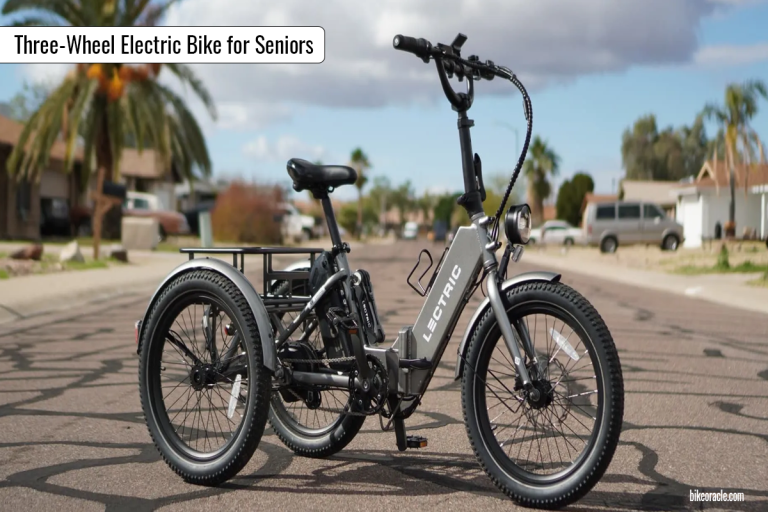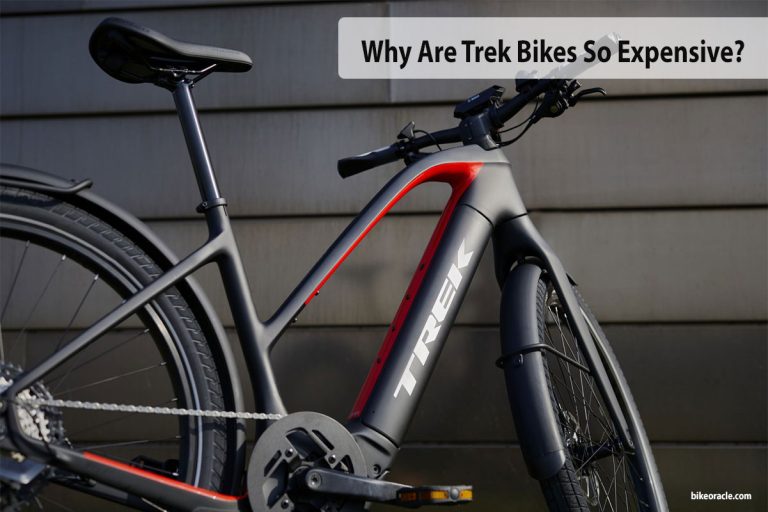Unveiling the Ultimate Guide: How Much Are Road Bikes?

The surge in popularity of road biking has transformed it into a favored recreational pursuit and a practical mode of transportation. However, for those venturing into the realm of road bikes for the first time, understanding the associated expenses can be a bewildering endeavor. In this comprehensive guide, we embark on an exploration of the multitude of factors that impact the price of road bikes.
We’ll navigate through diverse price ranges based on bike categories, meticulously dissect the pricing of individual components, unravel additional influencers that affect road bike prices, impart valuable insights on where to acquire road bikes and provide practical tips for uncovering the most enticing deals.
By the time you reach the conclusion, you’ll possess the necessary wisdom to confidently embark on your road bike purchase journey.
Elements Influencing the Price of Road Bikes:
Road bikes are subject to various elements that contribute to their price point. Two primary factors are the frame material and construction, as well as the quality of components and groupsets. Additionally, wheelset options, such as alloy or carbon fiber wheels, and the choice between tubeless and clincher tires significantly impact the overall cost of road bikes.
A. Frame Material and Construction:
The foundation of a road bike lies within its frame, influencing its weight, durability, and overall performance. Carbon fiber frames, renowned for their featherlight nature and remarkable stiffness, often grace high-end road bikes. However, these frames bear a heftier price tag due to the expensive materials and intricate manufacturing processes involved.
On the other hand, aluminum frames provide a more budget-friendly alternative, delivering commendable performance without compromising on quality. Although less prevalent in the modern era, steel frames offer a smooth and comfortable ride, albeit at the expense of added weight and a lower price point.
B. Component Quality and Groupsets:
The components and groupset of a road bike encompass essential aspects such as shifters, derailleurs, cranksets, cassettes, and brakes. Noteworthy manufacturers such as Shimano, SRAM, and Campagnolo cater to varying budgets and performance requirements with their extensive range of groupsets.
Shimano, for instance, offers an array of groupsets spanning from the entry-level Claris to the top-tier Dura-Ace, ensuring options for cyclists with diverse financial capacities. Similarly, SRAM and Campagnolo present alternatives across different price spectrums, accommodating a wide range of preferences.
C. Wheelset Options:
The selection of the appropriate wheelset for a road bike is critical, as it greatly influences performance and cost. Alloy wheels, prevalent in entry-level and mid-range road bikes, strike a balance between durability and affordability.
Carbon fiber wheels, prized for their reduced weight and superior aerodynamics, grace high-end road bikes, albeit at a higher price point. Moreover, the choice between tubeless and clincher tires contributes to the overall cost, with tubeless setups commanding a slightly higher investment due to their inherent advantages of decreased rolling resistance and enhanced puncture resistance.
Road Bike Categories and Price Ranges:
Road bikes are categorized into distinct price ranges. These categories encompass entry-level road bikes, mid-range road bikes, and high-end road bikes, each offering specific features and performance levels.
A. Entry-Level Road Bikes:
Entry-level road bikes serve as an ideal starting point for beginners or individuals seeking budget-friendly options. Despite their affordable price tags, these bikes do not compromise on essential features.
They often feature aluminum frames, entry-level groupsets, and reliable components that strike a balance between cost and performance. Typically, entry-level road bikes fall within the price range from $500 to $1,000, providing an accessible gateway for novice cyclists to embark on their road biking journey.
B. Mid-Range Road Bikes:
Mid-range road bikes cater to riders seeking a harmonious blend of performance and price. Positioned between entry-level and high-end models, these bikes offer an upgrade in materials and components without exorbitant expenditure.
Mid-range road bikes frequently have upgraded frame materials such as carbon fiber or high-quality aluminum, accompanied by mid-level groupsets that ensure smooth shifting and enhanced performance. Within the mid-range category, prices typically span from $1,000 to $3,000, affording intermediate cyclists a multitude of choices.
C. High-End Road Bikes:
High-end road bikes designed to satisfy the demands of professional cyclists and ardent enthusiasts. These top-tier models showcase cutting-edge technology, exceptional materials, and unparalleled performance.
High-end road bikes boast lightweight carbon fiber frames, high-performance groupsets, and advanced aerodynamic features. As a result, their price tags can surpass $10,000, reflecting the elite-level craftsmanship and precision required to deliver the ultimate riding experience.
Pricing Breakdown: The Components of Road Bikes:
To grasp the pricing intricacies of road bikes, a detailed analysis of individual components is essential, as they collectively define a bike’s performance and value.
A. Frame and Fork:
The frame and fork constitute the backbone of a road bike, significantly impacting its weight, stiffness, and overall ride quality. Carbon fiber frames, renowned for their lightweight nature and exceptional responsiveness, command a higher price due to the costly materials and intricate manufacturing processes involved.
Advanced manufacturing techniques and high-grade carbon fibers contribute to the elevated cost of these frames. In contrast, aluminum frames offer a more budget-friendly alternative, delivering a balance between performance and price. Steel frames, although less common nowadays, provide a comfortable ride at a lower price point, albeit at the expense of added weight.
B. Drivetrain and Groupset:
The drivetrain and groupset encompass critical components such as shifters, derailleurs, cassettes, cranksets, and brakes. Manufacturers such as Shimano, and SRAM offer a comprehensive range of groupsets that cater to different budgets and performance requirements.
Entry-level groupsets offer an affordable entry into road biking, although they may lack some features found in higher-tier options. As one ascends the price ladder, groupsets provide smoother shifting, reduced weight, and improved durability. Upgrading to higher-tier groupsets can significantly impact the cost of a road bike.

C. Wheels and Tires:
The wheelset of a road bike plays a pivotal role in its performance, with prices varying based on the materials utilized. Alloy wheels dominate entry-level and mid-range road bikes, emphasizing durability and affordability.
Carbon fiber wheels, renowned for their lightweight nature and improved aerodynamics, often accompany high-end road bikes, warranting a higher investment. Furthermore, the choice between tubeless and clincher tires contributes to the overall cost, with tubeless setups commanding a slightly higher price due to their inherent advantages such as decreased rolling resistance and enhanced puncture resistance.
D. Brakes and Handlebars:
Brake systems on road bikes can vary in terms of price and performance. Rim brakes, commonly found in entry-level and mid-range road bikes, provide reliable stopping power at a more affordable cost.
Disc brakes, available in mechanical or hydraulic variations, offer superior modulation and braking performance across diverse conditions, albeit at a higher price point. Handlebars, too, present different materials and designs, with carbon fiber options commanding a higher price compared to aluminum alternatives.
Comfort-oriented handlebars, such as endurance-style drop bars, can influence overall pricing due to their impact on rider comfort.
Additional Factors Influencing Road Bike Prices:
Beyond frame materials, components, and groupsets, numerous additional factors shape the pricing landscape of road bikes.
A. Brand Reputation and Value:
Well-established brands with a rich legacy and esteemed reputation often command higher prices. Years of experience, extensive research and development, and a history of excellence contribute to the premium associated with their products.
While lesser-known brands may offer comparable performance and features at a lower cost, brand reputation and prestige continue to influence the pricing of road bikes.
B. Research and Development Costs:
Innovation and technological advancements in road bike design necessitate significant research and development expenses.
Brands investing in wind tunnel testing, aerodynamics, carbon fiber manufacturing, and other cutting-edge developments reflect these costs in the price of their road bikes. Advanced features and materials drive up prices but also deliver heightened performance and ride quality.
C. Availability and Demand:
Supply and demand dynamics exert their influence on road bike pricing. Limited availability, high demand, or exclusivity can elevate prices, particularly for high-end models or special edition releases. Conversely, models with larger production runs and wider availability often exhibit more competitive pricing.
D. Customization Options and Upgrades:
Road bike manufacturers frequently offer customization options and upgrades, allowing cyclists to tailor their bikes to personal preferences. Custom paint jobs, upgraded components, and personalized specifications can significantly impact the price of a road bike. While these options enhance flexibility, they may result in higher costs.
Where to Purchase Road Bikes and Price Considerations:
When contemplating the purchase of a road bike, several avenues present themselves, each with its own price considerations.
A. Local Bike Shops:
Local bike shops provide the advantage of personalized service, expert guidance, test rides, and post-purchase support. Nevertheless, prices at local establishments may slightly surpass other options due to factors such as overhead costs, labor, and the superior level of customer service provided. Nonetheless, the added value and convenience of in-person interactions can render the price difference worthwhile for many cyclists.
B. Online Retailers and Marketplaces:
Online retailers and marketplaces offer a vast array of road bikes at competitive prices. Online purchases present access to a broader selection, opportunities for price comparison, and customer reviews to aid in decision-making. However, it is important to factor in shipping costs, potential assembly requirements, and the need for professional adjustments or tune-ups. Additionally, warranty coverage and customer support may vary between online retailers.
Decoding the Value vs. Price Trade-Off:
When it comes about the price of a road bike, it is crucial to evaluate the value it offers in relation to your budget. While high-end models may boast top-tier performance, they may not be necessary for every cyclist.
Need a balance between quality, performance, and cost based on your riding goals. Consider your skill level, frequency of use, desired features, and long-term investment potential when assessing the value proposition of a road bike.
Tips for Securing the Best Road Bike Deals:
Uncovering the best deals on road bikes can translate into substantial savings without compromising on quality. Here are some tips to assist you in procuring the most enticing prices:
A. Seasonal Sales and Discounts:
Keep a keen eye out for seasonal sales, such as end-of-season or holiday promotions, where bike prices often witness significant discounts. These sales present golden opportunities to acquire higher-tier road bikes at more favorable prices.
B. Utilizing Online Price Comparison Tools:
Harness the power of online price comparison tools that facilitate effortless comparisons across different retailers. These tools enable you to identify the most enticing deals and locate the lowest prices available.
C. Considering Pre-Owned Road Bikes:
Pre-owned road bikes can serve as an excellent option for those seeking to save money without sacrificing quality. Through diligent research and thorough inspections, you can unearth well-maintained used bikes at significantly lower prices than their new counterparts.
D. Negotiating Prices and Exploring Financing Options:
In certain scenarios, such as purchasing from a local bike shop, there may exist room for negotiation on the price of a road bike. Don’t hesitate to initiate discussions regarding pricing options or inquire about financing plans that can render the purchase more manageable.
Conclusion
In conclusion, navigating the realm of road bike costs necessitates a comprehensive understanding of various factors such as frame materials, component quality, wheelset options, and additional influencers. Road bikes span diverse categories and price ranges, offering choices for beginners, intermediate riders, and professional cyclists.
By thoughtfully assessing the value versus price trade-off, considering optimal purchase avenues, and leveraging tips for securing the best deals, you are empowered to make an informed decision that aligns with your unique needs and budget.




![How Fast Does a 2000W Electric Bike Go? [Answered]](https://bikeoracle.com/wp-content/uploads/2023/10/How-Fast-Does-a-2000W-Electric-Bike-Go-768x512.jpg)
